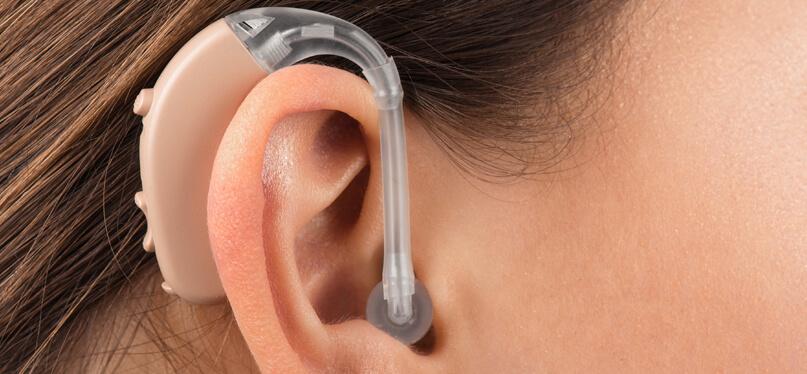If you or somebody you know uses hearing technology, you know how life-changing it can be, allowing you to form even deeper bonds with loved ones and rekindling your zest for life. But have you ever considered how those magnificent little life-changers function?
Well, you’re in luck. Today we are going to explore all there is to know about these electronic devices. Hopefully, by the end of the piece, you will have a rough idea of where to start and be able to choose an aid suitable for your needs.
Do’s and Don’ts when using Hearing Aids
It is critical to establish a daily routine when wearing hearing aids in order for them to function correctly. However, there are several points to note when it comes to hearing aid use and care, particularly those items that could cause them to need to be replaced. Here’s a list of dos and don’ts for keeping your hearing aids in top shape:
Do’s
Always use your hearing aids during the day, every day! If you’re a newbie, begin with 3 to 5 hours a day and progressively increase the time during the first several weeks, adding an hour or two daily. Consult your audiologist if wearing your hearing aid after a reasonable break-in period causes pain or discomfort.
If your hearing aids do not come with a charging box, keep them overnight in a hearing aid dehumidifier case, turning them off and opening the battery chamber. Ensure they’re out of direct sunlight and away from heating ducts.
As directed in your hearing aid instructions, clear wax and debris from your hearing devices daily. Dry the battery components with a cotton swab if they’ve been exposed to humidity or perspiration. Never use a dryer or a microwave to dry them!
Check that your hearing aids are working when you first put them in each day. Whenever some kinds are turned on, they play a little music, whereas others don’t. To test, rub your palms together beside each ear, the rubbing noise should be audible.
Don’ts
Allowing your hearing aids to become wet is not a good idea. Please do not keep them in the bathroom when bathing or showering, and do not wear them while swimming or undergoing spa or salon services. Steam can easily corrode your instruments owing to its moisture content.
While using a blow dryer, whether at home or at the salon or barbershop, don’t wear your hearing aids. Please do not keep your aids in your car, in a sunny window, beside a stove or heater, or anywhere else where they will be exposed to high heat.
Don’t spray hairspray or perfume on your hearing aids as it might harm the microphone and corrode the casing or faceplate.
Do not try to fix your hearing aids on your own. Most instruments’ warranties are voided when they are opened. Other than cleaning, drying, and replacing batteries, see your audiologist.
If you have any issues or queries about your hearing aids, please don’t hesitate to call your audiologist.
Key considerations when selecting Hearing Aids
Your hearing is a refreshing sensation that links you with others in your daily life, from colleagues with whom you have a coffee or tea to the family you return home in the evening.
If you’re suffering from hearing loss, discover how hearing aids might be the answer to regaining your ability to interact with the environment around you. Check out the following key considerations while deciding whether the best hearing aids could help you live a better life.
Aspects of hearing aids
Hearing aids are used by people who have suffered hearing loss that might be caused by a medical condition or way of living. For example, an audio engineer who frequently uses headphones may prefer in-the-ear-canal or in-the-ear types, which may not be feasible for somebody who needs heavy amplification to enhance their public hearing.
Some hybrid models include capabilities from both types of hearing aids and also modern technology such as Bluetooth, which allows you to use your hearing aids as earbuds to make phone calls or play music. If you or a loved one may benefit from having hearing aids with them, it would be of great help if you looked into some of the best hearing aid features. Here, you’ll have a plethora of devices to choose, from medical to leisure ones.
Possibilities for living styles
Your lifestyle may dictate the appearance and features of your hearing aids. The sociable butterfly may choose noise-cancelling qualities that help them operate in crowded and noisy environments, whereas somebody who lives in a calmer environment may prioritize natural sound.
The type of your hearing aid, like other considerations, may restrict your options. Still, the computational power of modern hearing aid technology is frequently considerable, so there’s certainly a combination that works for you out there.
Set realistic goals for yourself.
Remember that purchasing a hearing aid will not restore your hearing to normal! As a result, some sounds you hear may appear odd at first, but they are quite normal! Allow time to acclimatize to your hearing aid, and keep in mind that your brain is a muscle, and the more you use it, the faster you will adapt to the increased noises. Above all, seek expert help if you’re experiencing any discomfort, and keep happy by praising tiny victories.
Earwax
Yes, you read that correctly. Each person has a distinct quantity of earwax buildup. When picking the size of your hearing aids, it’s very best to be clear and know how often you wash your ears. Because certain hearing aids are more susceptible to earwax destruction and others are easier to clean, keep this in mind when making your decision.
Budget
There’s no avoiding it. Hearing aids are an expensive purchase that requires planning ahead of time. More features often entail greater pricing, as with most complex electronics.
There are no pre-configured feature bundles, and prices vary depending on the make. Because you’re trying to keep prices low, you might be confined to particular hearing aid models, features, and brands. Ensure you do your homework on the financing and prices of hearing aids, as well as financial assistance options.
Hearing Aids: Technology & Fitting
In today’s hearing aids, telecoils and even high-tech features like artificial intelligence are common. Telecoils help hearing in public areas such as theatres and airplanes.
Wireless technology, on the other hand, allows two hearing aids (one for each ear) to link and work as a single unit.
It also indicates that hearing aids will be able to connect to wireless acoustic signals like Bluetooth.
What’s better? Hearing aid applications are now available from many manufacturers, giving consumers more control over their devices.
The ideal fitting for you will be determined by your finances, cosmetic tastes, career obligations, and other issues, in addition to the level and hearing loss you have.
Since hearing aids are tailored to the individual, not every manufacturer, design, or technology level is suitable for everybody. Even patients with the same hearing loss may receive different hearing aids depending on other factors. Because of this, It can be difficult to compare hearing aids. It’s advisable to discuss which choices and features are right for you with your auditory healthcare professional.
Final Thoughts
Wearing hearing aids continuously and taking excellent care of them will help you succeed. Furthermore, an audiologist can inform you of new hearing aids and equipment as they become available. The objective is to select a hearing aid that you like and that improves your hearing and communication abilities over time.




